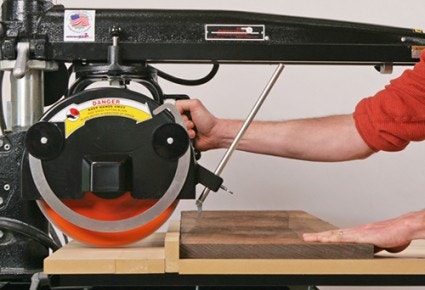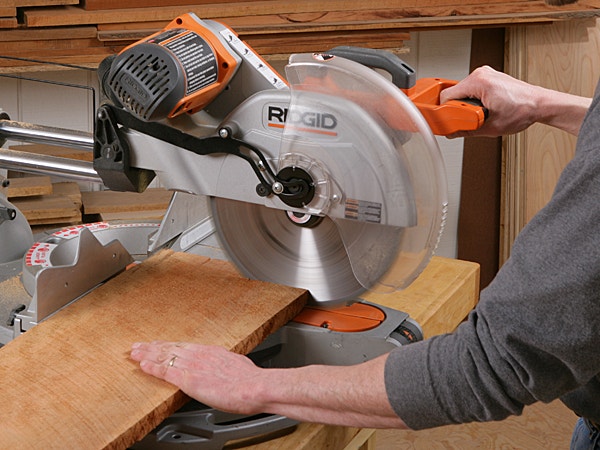Why Not Pull Through a Sliding Miter Saw Cut?
My son recently asked why I push my sliding (miter) saw, not pull it. According to him, the way the saw blade rotates, it will hold the board against the back support and save blowout of the edge of said board. What say you? – Scott Elam
Tim Inman: Tomato or tomato? The saw will cut either way. That said, there are safety reasons to cutting by first extending the saw out away from "home base" and then turning the power on and making the cut by swinging the saw into the wood and pushing back toward the home or docking location for the blade. I think there is also a pretty good argument in favor of better performance by doing it this way. A possible point of confusion is that for my ancient nemesis, the radial arm saw of the 1960's and 1970's, the "correct" cutting sequence was indeed to begin the cut from the back (fence side) of the board and pull the saw carriage out across the wood while cutting. I don't like those saws for a number of reasons. One of the biggest reasons is safety — or lack of it. Remember, I taught middle school kids how to use those saws back in the day. I have firsthand — and all my fingers — experience!
In milling or cutting there is a phenomenon known as "climb cutting" or "climb milling." These terms describe the effect of the cutter teeth wanting to take bigger and bigger bites of wood as they chomp away on the substrate in question because of the way the cutting edge engages with the wood. If this happens and it gets out of control (which can happen really fast sometimes), the blade will actually climb uncontrollably out across the wood. If the tool is not beefy enough to withstand the stress, the blade will both climb out across the wood too fast, and it may also climb up on top of the wood without cutting completely through it. This is scary and dangerous. I have "enjoyed" this experience too many times in school shops I've taught in to not get the chills every time this subject comes up. I never had an injury, but wow! Though the force vector cutting direction of the blade teeth does indeed push the wood back firmly onto the rear support, the opposite vector pushes the saw with all its biting force out toward the operator. With today's sliding miter saws, bringing the saw out to the front edge of the board and making the cut as the saw goes back towards home, the saw teeth do not have the "climbing" engagement with the wood. The climbing phenomenon is defeated. The cut is cleaner and the job is done much more safely.
As for craftsmanship, by cutting correctly as described for the miter saw, the blade passes the freshly cut surface only once. Cut made, saw ends up at home base. Job done. Cutting the other way means the saw begins cutting coming out of base position, then is pushed back past the newly cut surface again as it is docked, unless the saw is stopped at the end of the cut. This, in my experience, never happens. The result is a less clean, fuzzy, sometimes burned edge on the new cut.
So, the short answer for "why" is "because." That's how I trained my boys and and how my dad trained me, too. The longer answer is because it works better and it is much safer.

Scott, if you've ever felt the effects of a climb cut when using a radial-arm saw (or even a router, for that matter), you already know how unsettling the feeling is when the blade or bit wants to lurch ahead with your feed direction rather than against it. It can be scary stuff.
Pushing the miter saw's blade into the wood and against the cutting action also presses the workpiece against the fence — just the way you want it to — and never leads to a climb cut. There’s no downside. And with a sharp blade, tearout is minimal on the backside if you give the blade time to cut as it exits the wood. (For even less tearout, attach a sacrificial fence to your miter saw’s fence to tighten the kerf around the blade - it works great.)
I've never seen a sliding miter saw instruction manual suggest that the saw be started in the "docked" position and pulled toward you to make the cut. (And with all the tool review articles I've written over 16 years, I think I’ve read them all.) You're operating your miter saw the safest way now, and encourage your son to follow suit. It's not a radial-arm saw.
Keep the inspiration coming!
Subscribe to our newsletter for more woodworking tips and tricks



